Have you ever wondered whether you should see an orthodontist or a dentist for a specific oral health concern? You’re not alone. Many people are confused about the differences between these two dental professionals and when to visit each one. The orthodontist vs dentist distinction is important to understand as it directly impacts your oral health care. This comprehensive guide will clarify these important distinctions, helping you make informed decisions about your oral health care journey.
Key Differences at a Glance
Before diving into details, let’s compare orthodontists and dentists side by side:
| Aspect | Dentist | Orthodontist |
| Education | Dental school (4 years) | Dental school + Orthodontic residency (2-3 additional years) |
| Primary Focus | General oral health | Teeth alignment, bite correction, jaw issues |
| Regular Visits | Every 6 months recommended | As needed for specific treatment |
| Common Procedures | Cleanings, fillings, crowns, extractions | Braces, Invisalign, retainers, jaw alignment |
| Specialist Status | General practitioner | Dental specialist |
Education and Training: The Foundation of Difference
Understanding the educational paths of dentists and orthodontists helps explain why their roles and expertise differ in patient care.
Dentist’s Educational Path
A general dentist completes:
- Four years of undergraduate education
- Four years at dental school, earning either a Doctor of Dental Surgery (DDS) or Doctor of Medical Dentistry (DMD) degree
- Required licensing exams and continuing education
According to the American Dental Association (ADA), all dentists must graduate from an accredited dental school and pass both written and clinical exams to practice.
Orthodontist’s Extended Training
An orthodontist’s journey includes:
- Everything required to become a dentist (undergraduate degree + dental school)
- An additional 2-3 years in an orthodontic residency program
- Specialized training in teeth movement, facial development, and bite correction
- Board certification (optional but common among practicing orthodontists)
The American Association of Orthodontists (AAO) notes that this additional training represents over 4,800 hours of specialized education focused solely on orthodontic care.
Scope of Practice: What Each Professional Does
To better understand when to see each provider, it’s important to look at what services dentists and orthodontists typically offer.
A Dentist’s Domain
In the orthodontist vs dentist comparison, it’s important to understand what makes a general dentist unique. General dentists are the primary providers of oral health care for most patients. They perform routine checkups and cleanings while diagnosing and treating tooth decay and gum disease. Dentists fill cavities, perform root canals, extract teeth when necessary, and create and place crowns, bridges, and dentures. They also screen for oral cancer and other diseases, provide preventative education, and offer certain cosmetic treatments like whitening.
Dentists focus on the overall health of your teeth, gums, tongue, and other oral tissues. They are your first line of defense against oral health problems and will often refer you to an orthodontist if they identify alignment issues that require specialized care.
An Orthodontist’s Expertise
When examining the orthodontist vs dentist distinction, understanding an orthodontist’s specialized skills is crucial. Orthodontists specialize in correcting teeth and jaw alignment issues. They diagnose and treat misaligned teeth (malocclusions) while designing and implementing treatment plans for straightening teeth. Orthodontists install and adjust orthodontic appliances as part of their daily practice. They address complex bite issues, jaw alignment problems, and create retention plans to maintain treatment results over time. Many patients don’t realize that orthodontists also treat temporomandibular joint disorders (TMJ/TMD), address certain facial growth abnormalities, and focus on both functional and aesthetic aspects of your smile.
Orthodontists specialize in aligning teeth and correcting bite issues, with advanced training in craniofacial development, biomechanics, and modern orthodontic techniques—expertise that typically extends beyond the scope of general dentistry.
When to See a Dentist vs. an Orthodontist
Knowing when to visit a dentist or an orthodontist depends on the specific oral health concern you’re facing.
When to Visit Each Professional
The orthodontist vs dentist decision often comes down to your specific oral health needs. You should visit a dentist when you need regular checkups and cleanings (every six months), treatment for a toothache, cavity, or broken tooth, assistance with bleeding or swollen gums, or tooth extraction or replacement. Dentists also provide treatment for bad breath or oral infections, preventative care and oral hygiene guidance, nightguards for teeth grinding, and basic cosmetic procedures like whitening or bonding.
The decision between seeing a dentist or an orthodontist becomes more straightforward when you’re dealing with alignment concerns. An orthodontist is the right professional to consult for crowded or crooked teeth, gaps, overbite, underbite, or crossbite. They’re also the go-to experts for jaw discomfort, clicking sounds, or challenges with chewing and speaking that stem from misalignment. If you’re considering enhancing the appearance of your smile through tooth alignment, an orthodontist can help. Many people are referred to one by their dentist for more specialized care. According to the American Association of Orthodontists, children should have their first orthodontic evaluation by age 7 to catch developmental issues early.
The Patient Experience: What to Expect
The experience at a dentist’s office differs from that at an orthodontist’s, both in purpose and process.
At the Dentist’s Office
Typical visits to a general dentist include regular cleanings performed by a dental hygienist, X-rays to check for hidden issues (usually annually), and examination by the dentist to check for cavities, gum disease, and other concerns. Your dentist will discuss any issues and treatment options, then schedule follow-up appointments as needed. Most people see their dentist every six months for preventative care, with additional appointments for specific treatments.
At the Orthodontist’s Office
The orthodontic treatment journey usually involves a more specialized process. It begins with an initial consultation and comprehensive examination, followed by diagnostic records including X-rays, photos, and impressions or digital scans. Your orthodontist will then present a customized treatment plan based on your specific needs and preferences.
After installation of your chosen orthodontic appliance, you’ll have regular adjustment appointments (typically every 4-8 weeks). These visits ensure your treatment is progressing as planned. Eventually, treatment concludes with removal of appliances and transition to retainers, followed by retention checks to ensure lasting results.
Orthodontic treatment can last anywhere from several months to a few years, depending on the complexity of the case. Many patients find that the investment in orthodontic care yields significant improvements in both function and aesthetics.
How They Work Together: The Collaborative Approach
Dentists and orthodontists often work as a team to provide comprehensive care for patients seeking optimal oral health. Your dentist may identify issues that require orthodontic attention, such as crowded teeth that could benefit from braces or bite issues that might be corrected with Invisalign, and provide a referral to a trusted orthodontist.
During orthodontic treatment, whether you’re wearing traditional braces or using Invisalign aligners, you’ll still need to see your dentist regularly for cleanings and checkups. In fact, maintaining excellent oral hygiene becomes even more important during orthodontic treatment, particularly with braces where food can easily become trapped around brackets and wires.
Your orthodontist will communicate with your dentist about your treatment progress, ensuring coordination of care throughout your orthodontic journey. After your braces are removed or your Invisalign treatment is complete, your dentist monitors your oral health to help maintain your new smile for years to come.
This collaborative approach between orthodontist and dentist ensures all aspects of your oral health are addressed properly, from general dental health to specialized alignment corrections.
Insurance and Cost Considerations
Understanding the financial aspects can help you plan your care effectively:
- Dental insurance typically covers preventative care and basic procedures performed by general dentists
- Orthodontic treatment may be partially covered under dental insurance or separate orthodontic coverage
- Many orthodontic practices offer payment plans or financing options
- Health Savings Accounts (HSAs) and Flexible Spending Accounts (FSAs) can often be used for both dental and orthodontic care
The investment in orthodontic care often yields long-term benefits for both oral health and self-confidence.
Making the Right Choice for Your Oral Health
When deciding between a dentist and an orthodontist, it’s important to consider the nature of your dental concern. Think about whether it’s related to general oral health—like cleanings or cavities—or alignment issues such as crowding, bite problems, or jaw discomfort. Take into account if you’ve received a referral from another dental professional, as they often recognize when a specialist is needed. Your long-term oral health and aesthetic goals also play an important role in determining whether an orthodontist vs dentist is the right choice for your situation.
Both dentists and orthodontists play important roles in supporting your oral health—they just focus on different areas. Recognizing what each specializes in allows you to make confident, informed choices about your treatment needs.
The Long-Term Benefits of Proper Care
Understanding the orthodontist vs dentist distinction helps ensure you receive appropriate care from both professionals, which provides significant long-term benefits. Proper dental and orthodontic care leads to improved oral health and hygiene while reducing the risk of tooth decay and gum disease. Patients experience enhanced chewing function and speech along with prevention of excessive wear on teeth. Many also find relief from jaw pain and headaches that may have plagued them for years.
Beyond the physical benefits, the orthodontist vs dentist collaborative approach results in increased self-confidence from an improved smile. Research has also shown potential improvement in overall health since oral health is connected to systemic health in numerous ways. The investment in understanding when to see a dentist versus an orthodontist pays dividends throughout your lifetime.
Conclusion: Partners in Your Oral Health Journey
Understanding the difference between a dentist and an orthodontist helps you get the right care at the right time. It’s not about which one is better—they each serve a unique role in supporting your oral health. Dentists focus on overall care and disease prevention, while orthodontists specialize in correcting tooth alignment and bite issues. Together, they help you maintain a healthy, functional, and confident smile.
The orthodontist vs dentist relationship is collaborative rather than competitive. Your dentist might refer you to an orthodontist for specialized treatment, and your orthodontist will work with your dentist to ensure comprehensive care. Don’t wait to address your oral health concerns—whether they require dental or orthodontic attention. The sooner you seek appropriate care from the right professional, the better your outcomes will be.
Schedule Your Consultation Today
Don’t wait to take the next step toward a healthier, more confident smile. Our board-certified orthodontists proudly serve Irwin, PA and surrounding areas, offering personalized care backed by 5-star patient reviews.
Call us at (724) 864-5030
Book your appointment online now
We offer flexible scheduling, a welcoming environment, and expert care tailored to your needs. Get started today—your perfect smile is just one consultation away!




